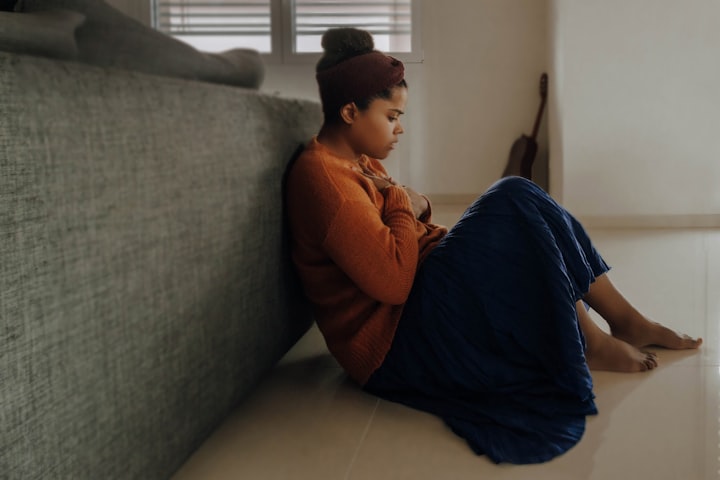13 Symptoms to Identify an Anxiety Attack and How to Help Those Suffering
Key is to try to stop focusing on the symptoms and not amplify them.

Anxiety attacks are associated with moments of stress or traumatic events, although they can occur even in calm situations. Knowing someone who has suffered or is currently experiencing one is quite common: according to a study published by the International Society of Affective Disorders, over 10% of the adult population in Spain has experienced such an attack.
These crises, also referred to as "anxiety attacks" or "panic attacks," are "an extreme emotional reaction of alarm that can cause fear," explains Antonio Cano Vindel, a Psychology professor at the Complutense University of Madrid and president of the Spanish Society for the Study of Anxiety and Stress, over the phone to Verne.
For Cano, one of the main reasons someone panics during anxiety attacks is the fear produced by not understanding their own symptoms. "They are similar to those in a common anxiety situation, the kind one might feel during an exam or a job interview," he explains. "But when they occur without apparent explanation, they induce fear and restlessness." This fear and restlessness, in turn, feed the symptoms.
"A vicious cycle occurs," says Cano. "If the affected person starts to experience palpitations, they might think they are having a heart attack, so they become scared, increase anxiety, and the palpitations worsen." The key to minimizing and even avoiding these attacks is, therefore, to understand the symptoms "so as not to amplify them and know that they cannot cause any harm."
Symptoms to Identify an Anxiety Attack
Among the symptoms of an anxiety attack, Cano lists:
1. Sudden increase in the feeling of anxiety and fear
2. Palpitations
3. Strong heart palpitations
4. Increase in body temperature
5. Sweating
6. Tremors
7. Sense of unreality
8. Depersonalization (feeling out of oneself) or derealization (feeling that what is happening is not real)
9. Fear of dying, losing control, or consciousness
10. Feeling of suffocation
In addition to the symptoms mentioned by Cano, the Diagnostic and Statistical Manual of Mental Disorders, published by the American Psychiatric Association, also includes:
11. Choking
12. Chest tightness or discomfort
13. Numbness or tingling sensation
Not all these symptoms appear in every anxiety attack. With the onset of the feeling of anxiety and fear—the main symptom—at least four more symptoms from the above list should appear. They all start abruptly and, if not controlled, reach their peak within the first 10 minutes. They do not have a predetermined duration: "It depends on how the person processes and how long it takes to distract themselves," explains Cano.
"The factors that worsen an anxiety crisis are the magnification and attention to symptoms," says the psychologist. "In cases of people who have already experienced one, anticipation is also a factor: the anxiety itself that thinking about an attack can provoke might actually trigger it." The key for the psychologist is, therefore, to divert attention from the symptoms as soon as they appear to avoid worsening them.
How to Help Someone Experiencing an Anxiety Attack
The priority for making an anxiety attack disappear is to get the affected person to stop thinking about the symptoms they are experiencing. To achieve this, Cano recommends:
1. Maintain an active conversation: "The key is to distract the person, although it's not easy because their attention will be focused on what they think is threatening them," says Cano. For the professor, the way to shift attention is to "do everything possible to get the affected person talking."
2. Avoid magnifying the symptoms: It's important to try to make the affected person understand that nothing happening can cause harm. While talking to them, "we should try to show that these are the same symptoms we experience during an exam or public speaking," says Cano.
3. Normalize the situation: "One of the fears that arise at the beginning of an anxiety attack is that the symptoms are noticeable," says Cano. Therefore, it's important to avoid drawing attention and having people gather around the affected person.
And what about the plastic bag?
In the collective imagination, there is the idea that when an anxiety attack occurs, the affected person needs to breathe into a plastic bag. This is because anxiety attacks have long been associated with hyperventilation, excessive breathing that causes a decrease in carbon dioxide in the blood. This reduction, in turn, produces symptoms associated with anxiety, such as dizziness or palpitations.
However, hyperventilation is not the cause of the attacks: a study by the Anxiety Disorders Center at Boston University, which attempted to induce panic attacks through hyperventilation, concluded that it does not always produce an anxiety reaction. "It may work for some," says Cano, "but hyperventilation is not the true driver of crises; magnification and attention to symptoms are causes, and that's what we should try to combat."





Comments
There are no comments for this story
Be the first to respond and start the conversation.